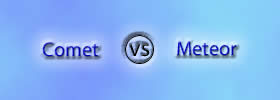Difference between TIFF and GeoTIFF
Key difference: TIF and TIFF are filename extensions used for the Tagged Image File Format. The Tagged Image File Format is widely supported by image-manipulation applications, by publishing and page layout applications, 3-D imaging applications, and by scanning, faxing, word processing, optical character recognition and other applications. It is a bitmapped image format that supports various resolutions. GeoTIFF is essentially the TIFF format with the ability to embed georeferencing information with the image. GeoTIFF is a metadata format. It allows geographic information to be associated with the data of the image.
 TIFF is a raster file formats, essentially a bitmap image. The term bitmap essentially means a map of bits or specifically a ‘spatially mapped array of bits’. The term bitmap is rooted in computer programming terminology. A bitmap images uses different colored pixels, which are arranged in a manner to display an image.
TIFF is a raster file formats, essentially a bitmap image. The term bitmap essentially means a map of bits or specifically a ‘spatially mapped array of bits’. The term bitmap is rooted in computer programming terminology. A bitmap images uses different colored pixels, which are arranged in a manner to display an image.
TIF and TIFF are filename extensions used for the Tagged Image File Format. The Tagged Image File Format is a file format for storing images. It is popular among graphic artists, the publishing industry, and among both amateur and professional photographers. The Tagged Image File Format is currently under the control of Adobe Systems.
The Tagged Image File Format is widely supported by image-manipulation applications, by publishing and page layout applications, 3-D imaging applications, and by scanning, faxing, word processing, optical character recognition and other applications. It is a bitmapped image format that supports various resolutions.
TIFF is a lossless data compression; it stores the image file with virtually no compression. This means that all the data on the image is stored when the image is compressed, i.e. there is no change in resolution. The TIFF format allows the editing and resaving of the image without suffering a compression loss. Hence it is often used for storing images that need to be edited and re-saved.
TIFF files can have a bit depth of either 16-bits per channel or 8-bits per channel. Also, multiple layered images can be stored in a single TIFF file. The Tagged Image File Format is widely supported by image-manipulation applications, by publishing and page layout applications, 3-D imaging applications, and by scanning, faxing, word processing, optical character recognition and other applications. It is a bitmapped image format that supports various resolutions. The Tagged Image File Format is used to store very large, high quality images, with files being as large as 4GB each.
 GeoTIFF is essentially the TIFF format with the ability to embed georeferencing information with the image. Georeferencing means to ‘define its existence in physical space.’ Essentially, it establishes a relation between the image and a set of coordinates. Alternatively, if may also determine the location of other geographical features.
GeoTIFF is essentially the TIFF format with the ability to embed georeferencing information with the image. Georeferencing means to ‘define its existence in physical space.’ Essentially, it establishes a relation between the image and a set of coordinates. Alternatively, if may also determine the location of other geographical features.
GeoTIFF is a metadata format. It allows geographic information to be associated with the data of the image. Hence, the metadata and image data can be encoded into the same file, in lines with the TIFF format. The metadata can include map projection, coordinate systems, ellipsoids, datums, etc.
GeoTIFF can be used by any GIS, CAD, Image Processing, Desktop Mapping and any other types of systems that use geographic images. The GeoTIFF format is fully compliant with TIFF 6.0. Due to this, programs incapable of reading and interpreting the specialized metadata will still be able to open a GeoTIFF format file.
Image Courtesy: veryicon.com, mapsdigital.com









Add new comment